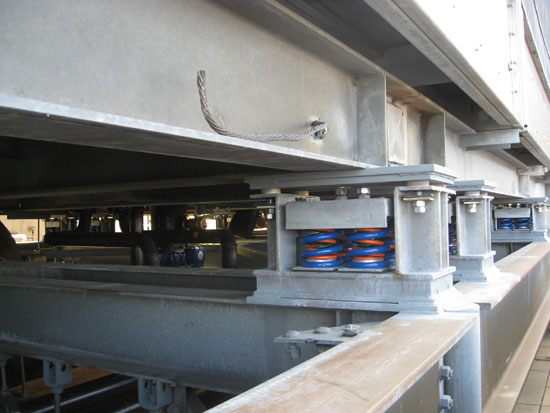Understanding Seismic and Wind Restraints
As with any design project, certain basic information provided by the building owner, architect, and structural engineer is required before seismic restraints can be selected and placed. This information should be included in the specification and bid package for the project and should also appear on the first sheet of the structural drawings and on the first sheet of the drawings for each MEP system.
 |
The US Geological Survey has mapped high, medium and low seismic hazard areas within the U.S. Image courtesy of Kinetics Noise Control |
 |
 |
Examples of properly restrained HVAC rooftop equipment that survived the 1994 Northridge, California. Photos courtesy of Kinetics Noise Control |
What Determines Seismic Restraint Requirements?
Several factors determine the need for seismic restraints:
* Occupancy Category
* Seismic Design Category
* Component Importance Factor
Occupancy Category
The nature of the building use, or its Occupancy Category, is determined by the building owner and the architect of record. In 2006 IBC the building use is defined through the occupancy category, which ranges from I to IV. Occupancy Category I and II is applied to buildings where failure presents a low hazard to human life, for example agricultural and minor storage buildings. Category III applies to high occupancy buildings such as schools and office buildings. At the other end of the range, Occupancy Category IV is applied to buildings, which are deemed to be essential for recovery after a disaster, such as hospitals, police stations and telecommunications centers.









